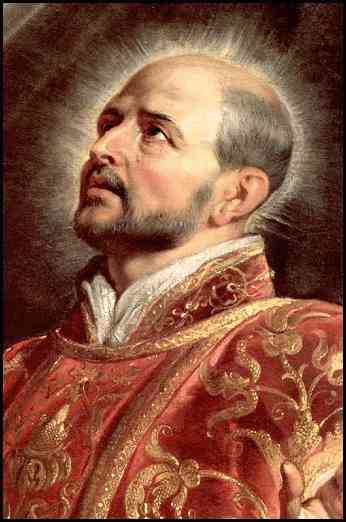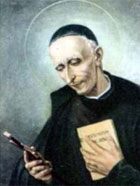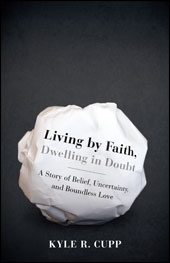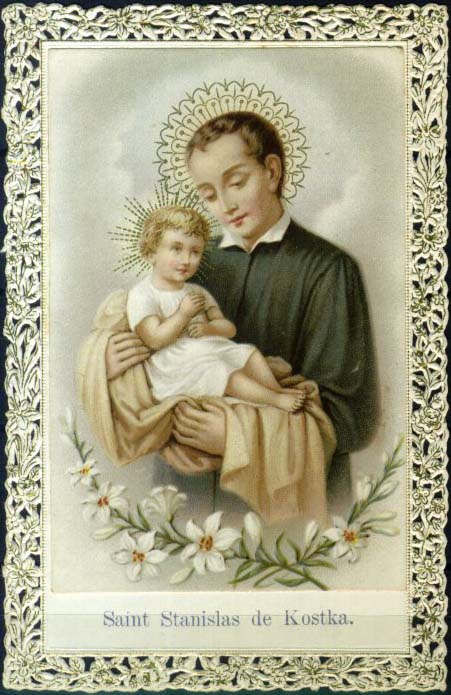Poverty of Spirit

By Kevin O’Brien, SJ
From The Ignatian Adventure
As we see in the exercises on the call of Christ, our King, and in later exercises, the disciple of Christ aspires to poverty.
All of us are called to “poverty of spirit,” or spiritual poverty, which describes a stance of utter dependence before God, not in any demeaning, servile sense, but in the sense of the Principle and Foundation: God is God, and we are creatures created to praise, love, and serve God. Before all else, we depend on God for our happiness and fulfillment. While we are grateful for our talents, abilities, wealth, and achievements, we are free enough to offer them to the service of God and others and to let go of them when they get in the way of that self-giving.
In short, poverty of spirit is an emptying of self so that God can fill us with life and love. Our prayer helps us grow in spiritual poverty and freedom. Christ is the model of spiritual poverty par excellence.
Christ also lived in actual or material poverty, with a lack of material goods. Some people may be called to this way of living. Priests, brothers, and sisters in religious orders profess a vow of poverty, renouncing personal possessions and wealth and depending on their religious community for their material needs. God may call others to a life of material poverty without professing vows. Material poverty is not an end in itself, for abject poverty is degrading to the human person (as a survey of our world so tragically reveals). Instead, for those called to this state of life, material poverty is a means to deepen one’s commitment to the poor whom Christ held so dear.
Although not everyone is called to live a life of actual poverty, we are all called to live simply and in freedom with respect to the riches we have-whether they are in the form of material possessions, talents, reputation, or influence. All are called to labor with Christ to help the poor and powerless in some way. All are called to give countercultural witness to the rampant competition and materialism around us.
St. Joseph Pignatelli

St. Joseph Pignatelli, SJ, helped restore the Society of Jesus after its suppression (1773-1814).
For multiple political reasons, European monarchs pressured the pope into suppressing the Jesuits in the late 18th century. The Jesuit suppression affected Portugal, France, the Two Sicilies, Parma, and the Spanish Empire by 1767. In 1773 Pope Clement XIV dissolved the Order entirely. Prussia and Russia refused to carry out the papal decree. Because of this, the Society of Jesus survived in Russia throughout the suppression.
When the Jesuits were suppressed in Spain, Pignatelli could have remained in his country, because he was a member of the Spanish nobility. Instead Pignatelli chose exile with his Jesuit brothers and became Superior for 600 remaining Jesuits. These Jesuits were refused entry into Italy and settled on the southern tip of Corsica, only to be exiled once again when France acquired Corsica in 1768. The community finally made it to Ferrara in Northern Italy, where they lived a fragile existence until the final suppression in 1773.
Now forbidden to practice his ministry as a priest, Pignatelli moved to Bologna and for the next 24 years kept in contact with his dispersed brethren. Pignatelli attempted to become a member of the Jesuit community in Russia. Unable to go to Russia, Pignatelli accepted an invitation from Ferdinand, Duke of Parma, to reestablish the Society in his territory. With several Jesuits from Russia, the Jesuit community was reestablished in 1797. Pignatelli renewed his vows and was appointed Novice Master. Later he was appointed Provincial in Italy.
In the midst of the Napoleonic wars, with shifting political pressures among the small states in Italy, Pignatelli shepherded the re-founded Jesuit communities. Joseph Pignatelli hoped to live to see the full restoration of the Society of Jesus but, worn out by his labors, died in 1811-three years before Pope Pius VII universally restored the Society. Due to his efforts to keep the Jesuit ideals and community alive, St. Joseph Pignatelli is considered the restorer of the Society of Jesus.
Wisdom Story – 75

by Paul Brian Campbell,SJ
As Gandhi stepped aboard a train one day, one of his shoes slipped off and landed on the track. He was unable to retrieve it as the train was moving. To the amazement of his companions, Gandhi calmly took off his other shoe and threw it back along the track to land close to the first. Asked by a fellow passenger why he did so, Gandhi smiled. “The poor man who finds the shoes lying on the track,” he replied, “will now have a pair he can use.”
Temple of the Town God

A popular stop for local residents, the Temple of the Town God (Chenghuang miao) in Shanghai is filled with statues of local gods and spirits that bring good fortune.
History
When this temple was first built in 1403 under Ming Emperor Yongle (1403-25), it was dedicated to the legendary Han general Huo Guang as well as the guardian city god, Qin Yubo. Qin Yubo was a righteous scholar who refused to get involved in court politics (then rife with corruption) despite much pleading from the emperor. Deified upon his death in 1377, Qin Yubo now watches over and protects the city of Shanghai.
The temple had become more of a marketplace by the time of the Cultural Revolution (1966-76), when it was mostly destroyed. Both the temple and surrounding market were thoroughly restored in the early 1990s.
What to See
The present version of the Chenghuang miao has been much restored since its 15th-century origins, but still retains its historic and authentic feel. There is still a statue of General Huo Guang in the front hall and Qin Yubo in the back hall, with many other deities represented as well.
Many Shanghai residents frequent the temple to offer incense before their favorite local god, hoping for good fortune in return. The temple is staffed by what the Blue Guide China calls “bad-tempered monks [who] are clearly more interested in collecting money from local people willing to pay to have the gods solve their problems than entertain foreign visitors.”
The Temple of the Town God is surrounded by the reconstructed shops and restaurants of the “traditional” market, as well as the beautiful Yu Yuan (Garden of Content), created in the 16th century.
St. Stanislaus Kostka

Stanislaus Kostka was only 18 years old when he died, and had been a Jesuit novice for less than a year. He is one of the popular saints of Poland and many religious institutions have chosen him as the protector of their novitiates.
He was born in 1550 at the family estate in east-central Poland. His father was a local governor and military administrator, and a senator of the Kingdom of Poland. His mother was the sister and niece of Polish dukes. According to the standards of those times, all this meant Stanislaus was a Polish noble destined for public life.
When he was 14, his father enrolled him and his older brother Paul in a new Jesuit college in Vienna that was especially favored by the nobility. Paul, who always had an eye for comfort, found them rooms in the house of an Austrian senator.
Stanislaus was a serious and quiet person. He avoided all unnecessary contact with visitors, applied himself to his studies, dressed plainly for a noble, and spent so much time in prayer that Paul derisively nicknamed him “the Jesuit.” Paul interpreted Stanislaus’ natural meekness and humility as a reproach to his own worldly and carefree way of life. Whatever Stanislaus did either offended or irritated him. So, he harassed his younger brother, abusing him physically and verbally. Stanislaus didn’t crack under pressure. He just became more virtuous and determined to become a Jesuit.
In December 1565, Stanislaus received some heavenly help. Feeling ill and close to death, he asked to receive Holy Communion. Paul kept putting him off, saying the illness wasn’t life-threatening. (Their landlord was a staunch Lutheran and wouldn’t allow a priest into the house). Stanislaus prayed to St. Barbara to somehow receive Communion, and soon Barbara and two angels appeared to him in his room, bringing him Communion. They left, and then Our Lady carrying the baby Jesus appeared, and told him he was to enter the Society of Jesus. Stanislaus regained his health and returned to college.
Now really resolved to be a Jesuit, Stanislaus asked the Jesuit provincial of Vienna for admittance, only to be told he needed his parents’ consent. Stanislaus knew they wouldn’t give it, and decided to ask further away from home. In August 1567, he walked the 450 miles to Augsburg, Germany. Paul heard of it and started after him. Stanislaus was dressed as a simple pilgrim, and the angry Paul went right past him on the road without recognizing him and gave up the chase.
Stanislaus reached the Augsburg provincial, Fr. Peter Canasis, S.J., and together they agreed that Stanislaus ought to get even further away from his father’s political influence. They decided on Rome. In September 1567, he and two Jesuits went on foot, south through Germany and over the Alps to Italy. It took a month to reach Rome.
There Stanislaus presented himself to the head of the Society of Jesus, Father General Francis Borgia, S.J., and entered the Jesuit novititate. For the next ten months, his prayer was purified and his union with God grew more intense.
In early August 1568, Stanislaus had a premonition that he would die on August 15. He took sick on the 10th, and on the 14th he told the infirmarian that he would die the next day, but this Jesuit shrugged it off; the patient didn’t seem critically ill. Then suddenly he worsened. After receiving Holy Communion and the Last Rites, he chatted cheerfully with his fellow novices until nightfall. After they left, he prayed often, “My heart is ready, O God, my heart is ready!” About 3:00 a.m. his face lit up joyfully. He said Our Lady was approaching with her court of angels and saints to take him to heaven. Then he died – on August 15, the feast of Our Lady’s own assumption into heaven.
Only 36 years after his death, he was beatified. He was canonized on December 31, 1726 by Pope Benedict XIII. His feast day is November 13.
Pope Francis: God has a loving weakness for the lost sheep

Finding the lost sheep is a joy to God, because he has a “loving weakness” for those who are lost. These were the words of Pope Francis during his homily at Mass on Thursday morning in Casa Santa Marta.
Commenting on the parables of the lost sheep and of the lost coin, Pope Francis talked about the attitude of the scribes and the Pharisees, who were scandalised by the things that Jesus did. They murmured against him: “This man is dangerous, he eats with the publicans and the sinners, he offends God, he desecrates the ministry of the prophet to accost these people”. Jesus, the Pope explained, says that this “is the music of hypocrisy”, and “answers this hypocrisy with a parable”.
“He replies to this murmuring with a joyful parable. The words ‘joy’ and ‘happiness’ appear in this short text four times: three times joy, and once happiness. “And you” – it’s as if he were saying – “you are scandalised by this, but my Father rejoices”. That is the most profound message of this story: the joy of God, a God who doesn’t like to lose. God is not a good loser, and this is why, in order not to lose, He goes out on his own, and He goes, He searches. He is a God who searches: He searches for all those who are far away from Him, like the shepherd who goes to search for the lost sheep.”
The work of God, the Pope continued, is to “go and search”, in order to “invite everyone to the celebrations, good and bad”.
“He can’t stand losing one of His own. And this is the prayer of Jesus, too, on Holy Thursday: “Father, may none get lost, of those You have given to me”. He is a God who walks around searching for us, and has a certain loving weakness for those who are furthest away, who are lost. He goes and searches for them. And how does he search? He searches until the end, like the shepherd who goes out into the darkness, searching, until he finds the sheep. Or like the woman, when she loses a coin, who lights a lamp and sweeps the house, and searches carefully. That’s how God searches. “I won’t lose this son, he’s mine! And I don’t want to lose him.” This is our Father: he always comes searching for us.”
Then, Pope Francis explained, “when he has found the sheep” and brought it back into the fold with the others, no one must say ‘you are lost’, but everyone should say ‘you are one of us’, because this returns dignity to the lost sheep. “There is no difference”, because God “returns to the fold everyone he finds. And when he does this, he is a God who rejoices”.
“The joy of God is not the death of the sinner, but the life of the sinner. And how far from this were those who murmured against Jesus, how far from the heart of God! They didn’t know Him. They thought that being religious, being good people meant always being well-mannered and polite, and often pretending to be polite, right? This is the hypocrisy of the murmuring. But the joy of God the Father, in fact, is love. He loves us. “But I’m a sinner, I’ve done this and that and the other!” “But I love you anyway, and I go out searching for you, and I bring you home.” This is our Father. Let’s reflect on this.”
Wisdom Story – 74

by Paul Brian Campbell,SJ
Another story from Blessed Teresa of Calcutta:
One evening we went out and rescued four people off the streets. One of them was in a desperate condition. I told the sisters, “You take care of the others. I will care or this one who is worse off.” I did everything for her that my love could do. I put her into bed, and I saw a beautiful smile light up her face. She squeezed my hand and only managed to say two words, “Thank you.” And then she closed her eyes.
I couldn’t help but ask myself there beside her body, “What would I have said if I had been in her place?” My answer was very simple. I would have said that I was hungry, that I was dying, that I was cold. Or I would have said that this or that part of my body hurt or something like that.
But she gave me much more. She gave me her grateful love. And she died with a smile on her face.
Global Development: Progress on Poverty, But 1.2 Billion Still Live on the Extremes

The number of people living in extreme poverty around the world has sharply declined over the past three decades, but in 2010 it still included roughly 400 million children, according to a new World Bank analysis that for the first time gives an in-depth profile of the poorest people in the world.
The report, released on Oct. 10, found that 721 million fewer people lived in extreme poverty-defined as under $1.25 a day-in 2010 compared with 1981. But it also concluded that a disproportionate number of children were among them. Children accounted for one in three of the 1.2 billion people living in extreme poverty around the world. In low-income countries, the percentages were even worse, with half of all children living in extreme poverty.
“We have witnessed a historic movement of people lifting themselves out of poverty over the past three decades, but the number of children living in poverty alone should leave no doubt that there remains much work to do,” said Jim Yong Kim, president of the World Bank Group. “We can reach our goals of ending poverty and boosting shared prosperity, including sharing that prosperity with future generations, but only if we work together with new urgency. Children should not be cruelly condemned to a life without hope, without good education and without access to quality health care. We must do better for them.”
World Bank analysts also found that the poor in 2010 were as badly off as they were in 1981, with the exception of poor people in India and China. The “average” poor person in a low-income country lived on 78 cents a day in 2010, compared with 74 cents a day in 1981.
The report, said William O’Keefe, vice president for advocacy at Catholic Relief Services, “documents the success of the global fight against poverty to date and the challenge ahead.” As in the United States, he said, “Poverty around the world is increasingly a blight on children.
“Catholic Relief Services is expanding successful and innovative agriculture, nutrition and health efforts that will help poorer children in poor countries reach their potential. But we can’t help 400 million children on our own.
Living by Faith, Dwelling in Doubt

I consider myself to be a fairly intelligent person (usually!), but when I came across the writings of Kyle Cupp, I knew I was encountering a profound and creative thinker who is way out of my league. Loyola Press is honored and pleased to present his first book with us, Living by Faith, Dwelling in Doubt – A Story of Belief, Uncertainty and Boundless Love.
Kyle not only believes that faith and uncertainty can exist side by side, but through the wrenching story of his new-born daughter’s death, he shares his journey from certainty to a shaken yet strong faith.
I was touched by this anecdote of attending an Easter Vigil with his wife and baby son:
For the first part of the Mass, I hid away until he fell asleep in my arms, then I stood in the hallway and narthex, swaying with soft steps to keep him calm and resting. He breathed into my shoulder with that whimper babies make when falling asleep after a long cry. I stood in the hallway where I could hear the prayers and songs of the Mass and follow along. Genece was assigned to sing the alleluia, and as I had hoped, I was able to hear her.
My arms and back ached from holding my very heavy son, but I held him close, absorbing the heat from his head and body, hearing his sad but quieting breath, and listened to my wife sing of her love for God. The moment was awesome in the richest sense of the word. As glorious as my wife sounded, her prayer would not have been as sublime and beautiful and heavenly had I sat alone comfortably in a seat.
I felt love wash over me: love for my sleeping son, love for my singing wife, and love for the God whose praises we sang. I felt enthusiastic with love and intimately close to my son, my wife, and my God.
Uluru (Ayers Rock)

Uluru is a massive sandstone rock in central Australia that is sacred to the Aborigines of the area, who are known as the Anangu. In recent years, Uluru has also become important for New Age practitioners.
Believed to have been formed by the activities of ancestral beings in creation time (or Dreamtime), the beautiful site includes many caves, waterholes, and ancient rock paintings. Uluru is the traditional name for the rock, Ayers Rock is the name given by European explorers, and Uluru/Ayers Rock is the official name.
History
Australia’s native people believe themselves to be direct descendents of these ancestral beings, and continue to carry on the rituals and responsibilities associated with their ancestral land.
The aboriginals of western and central Australia call themselves Anangu, a word that originally meant simply “human being” but has come to refer to aboriginals (especially in western and central Australia) as opposed to Australia’s European descendents. The Uluru-area Anangu include two different language groups, the Yankunytjatjara and Pitjantjatjara.
The beginning of human settlement in the Uluru region has not been determined, but archaeological findings to the east and west indicate a date more than 10,000 years ago. In October 1872, the explorer Ernest Giles was the first non-native person to see the rock formation. He saw it only from a distance, prevented by a lake from approaching closer.
On July 19, 1873, the surveyor William Gosse visited the rock and named it Ayers Rock in honor of the Chief Secretary of South Australia, Sir Henry Ayers.
The Aboriginal name was first recorded by the Wills expedition in 1903. Since 1903, both names for the site have been used, although Ayers Rock was the most common name used by outsiders until recently.
In December 1993, the site was officially renamed “Ayers Rock/Uluru.” The order of the names was officially reversed to “Uluru/Ayers Rock” in November 2002, following a request from the Regional Tourism Association in Alice Springs.
On October 26, 1985, the Australian government returned ownership of Uluru to the local Pitjantjatjara Aborigines, with one of the conditions being that the Anangu would lease it back to the National Parks and Wildlife for 99 years and that it would be jointly managed. The rock and the surrounding park were designated a World Heritage Site in 1987.
Myth and Mystery
The Aboriginal inhabitants of Australia, the Anangu, believe the Central Australian landscape was created at the beginning of time by ancestral beings. According to Aboriginal myth, the world was unformed and featureless until ancestral beings emerged from the void and journeyed across the land, creating all living species and the features of the desert landscape. Uluru is regarded as spectacular physical evidence of the ancestors’ activities during the creation period.
The record of Dreamtime can be found in the rock itself, its fissures, cliffs and caves. The main path up to the summit of the rock is the traditional route taken by aboriginal ancestors upon their arrival at Uluru in the creation time. Various outcrops represent different ancestral spirits, and by touching the rock, an Aborigine can invoke the spirits for blessings and communicate with Dreamtime.
According to one Aboriginal myth, two tribes of ancestral spirits were invited to a feast in the area, but became distracted by beautiful Sleepy Lizard Women and dallied at a waterhole. Angry at being stood up, the waiting hosts sang evil into a mud sculpture that came to life as the dingo, a wild dog that has been known to carry off babies. There was a terrible slaughter followed by a great battle, which ended in the deaths of the leaders of both tribes. The earth itself rose up in grief at the bloodshed-and this is Uluru.
Uluru remains sacred to several Aboriginal tribes in the area, who still use it for rituals and leave paintings in its caves. The meanings of the rock’s features are passed on to youth in songs at initiation ceremonies conducted in the caves along the base of Uluru. The rock is also sacred to New Age practitioners, some of whom have adopted Dreamtime into their beliefs.
What to See
Uluru is an isolated sandstone rock (not technically a monolith) that stands 346 meters high and more than 8 km (5 miles) around. Roughly triangular in shape, it stretches for over 2 miles in length and nearly 2 miles in width. It has a harder exterior than most other rock formations, which allows for the unusually steep rock faces all the way to ground level.
Uluru is a completely bare rock without the least bit of vegetation, which only adds to its stark and mysterious beauty. By great contrast, however, the base of the rock is nourished by rain runoff from Uluru and is a fertile oasis of water pools, rich greenery and a variety of wildlife. It is thus an ideal ceremonial site for the Aborigines, who camp in the caves and are sustained by the water and available food.




